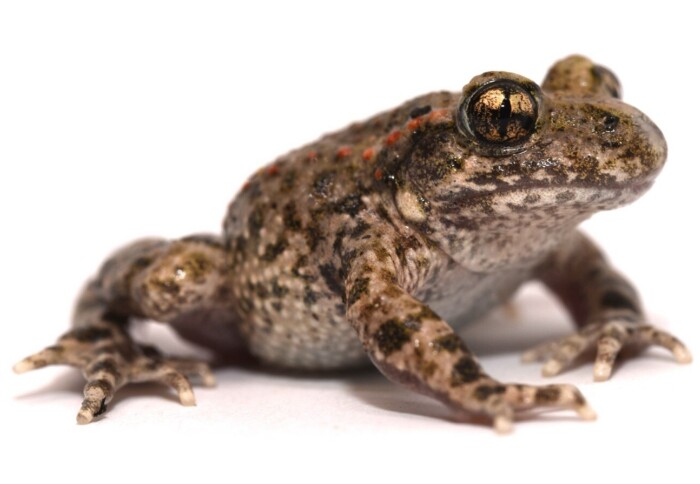New funding to crack the “sugar code” in the amphibian skin microbiome

This project will study species including the common midwife toad, which has suffered severe declines across Europe due to the spread of Bd.
£1.1 million fund awarded to crack the glycan (sugar chain) code that shapes the amphibian skin microbiome and susceptibility to a deadly fungus.
A collaboration between researchers at Imperial College London and Queen Mary University of London has received funding from the UK Biotechnology and Biological Sciences Research Council (BBSRC) to crack the “sugar code” in the amphibian skin.
"It’s an exciting opportunity to delve into the emerging field of ‘amphibian holobiont’ research with a special focus on the glycointeractome." Dr Yan Liu Senior Lecturer in Glycosciences
Across the tree of life, cells are coated with sugar chains called glycans that play important roles, acting both as binding sites and nutrients for microbes. By applying advanced methods in analytical chemistry and microbiology, the team will develop bespoke glycan microarrays consisting of amphibian skin glycans printed on special glass or nitrocellulose slides.
Using these microarrays, the team hopes to identify the specific glycan structures that tether both harmful pathogens and beneficial microbes alike. This approach promises not only to yield novel and vital insights into how the skin microbiome of vertebrates assembles but also to pinpoint the key glycans necessary for infection by pathogens such as the deadly fungus Batrachochytrium dendrobatidis (Bd).
Since its discovery in the late 1990s, Bd has been linked to the decline of at least 500 species of amphibians, representing the greatest recorded loss of biodiversity due to a pathogen. By identifying bacteria that compete with Bd for host glycan binding, the team hopes to ultimately develop probiotics that can be applied to the skin of vulnerable animals, conferring protection from Bd infection. If successful, these novel therapies would revolutionize our ability to bring species back from the brink of extinction.
Dr Yan Liu, Senior Lecturer in Glycosciences at Imperial's Department of Metabolism, Digestion and Reproduction comments: “We’re thrilled to be part of this project, which offers a unique chance to apply our tissue glycome microarray workflow to amphibians. Amphibian glycomes are much less well understood than those of humans and other animals. We hope to start filling this knowledge gap by revealing how the skin surface glycans of different amphibian species influence and interact with their microbiota, including bacteria and fungi. It’s an exciting opportunity to delve into the emerging field of ‘amphibian holobiont’ research with a special focus on the glycointeractome.
Dr Kieran Bates, Lecturer in Microbiome Science at the Blizard Institute, Queen Mary University of London said: “This exciting research programme will generate new animal replacement models for studying the microbiome, with tremendous potential to advance our understanding of how microbial communities assemble and interact with a host. The knowledge gained from this research may prove to be an eleventh-hour game changer in saving at risk amphibian species.”
Professor Ten Feizi, Director of Imperial's Glycosciences Laboratory adds: “With the unique complementarity of expertise, prospects for success in the project are excellent.”
The collaboration was initiated at a networking event hosted by the Imperial College London Microbiome Network, benefiting from discussions at events organized by the Fungal Science Network, The Leverhulme Centre for the Holobiont and the Glycobiology Imperial Network of Excellence.
Photo credit Phillip Jervis.
Article text (excluding photos or graphics) © Imperial College London.
Photos and graphics subject to third party copyright used with permission or © Imperial College London.
Reporter
Benjie Coleman
Department of Surgery & Cancer